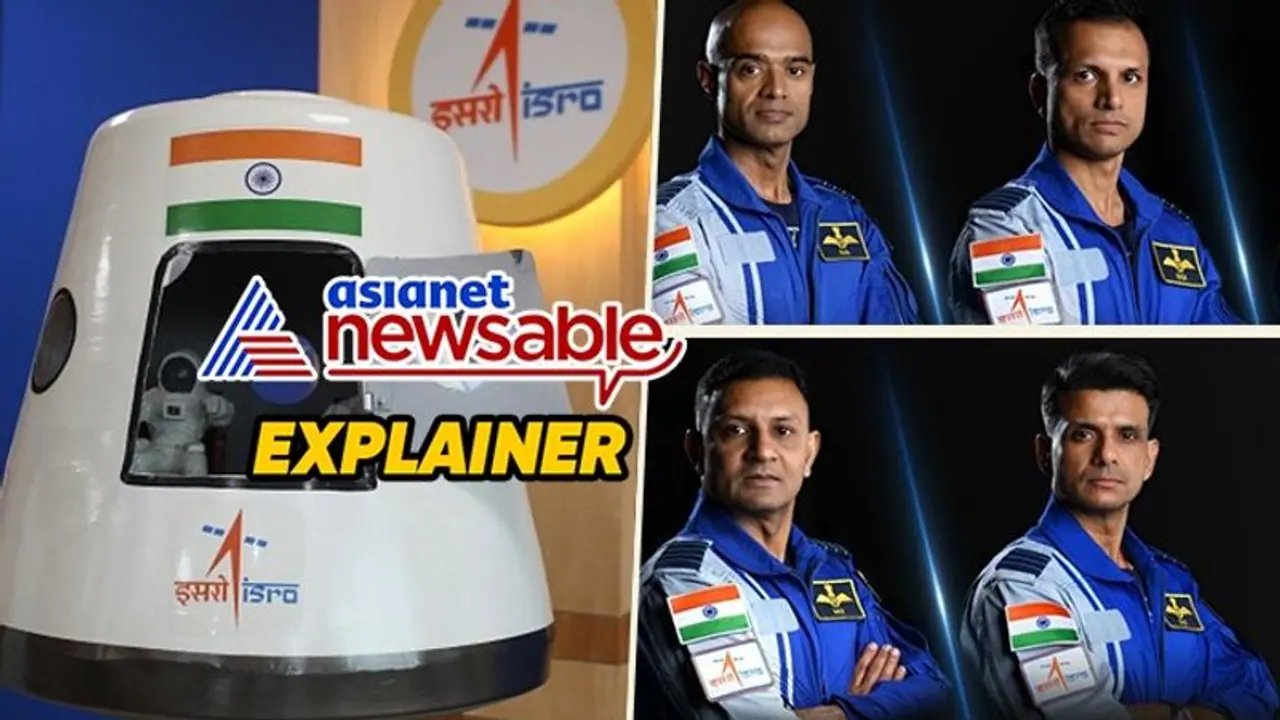As Group Captains Prasanth Balakrishnan Nair, Ajit Krishnan, Angad Pratap, and Wing Commander Shubhanshu Shukla were announced as the chosen pilots for India's human space flight mission Gaganyaan, questions arose regarding the absence of female pilots among them.
Prime Minister Narendra Modi recently lauded the significant role played by women scientists in India's space missions, emphasizing their indispensable contributions to achievements like Chandrayaan and Gaganyaan. However, as Group Captains Prasanth Balakrishnan Nair, Ajit Krishnan, Angad Pratap, and Wing Commander Shubhanshu Shukla were announced as the chosen pilots for India's human space flight mission Gaganyaan, questions arose regarding the absence of female pilots among them.

Notably, two out of the four individuals of Indian origin who have ventured into space were women— the late Kalpana Chawla and Sunita Williams, who remain revered national icons.
Also read: Gaganyaan mission: Four astronauts trained at the same Russian centre as Rakesh Sharma
The reason behind the absence of a woman pilot for India's first human space flight mission lies in the selection process for astronaut-designates. Across the globe, candidates for inaugural missions are typically chosen from a pool of test pilots. At the time of selection, India did not have a woman test pilot. Test pilots are renowned for their exceptional flying skills and ability to maintain composure even in challenging situations, making them the epitome of air warriors.
Despite the absence of female pilots among the initial candidates, officials from the Indian Space Research Organisation (ISRO) and the Vikram Sarabhai Space Centre have expressed openness to including women astronauts in future missions. ISRO reiterated its commitment to merit-based selection, emphasizing that gender is not a determining factor in astronaut recruitment.
"Very soon India will need mission specialists and women can well be accommodated in that role as astronauts, but the first few missions of crewed Gaganyaan will obviously be ferrying the crew that has been selected and trained," ISRO chairman S Somanath said in an interview with NDTV.
According to Dr. Unnikrishnan Nair, the director of the Vikram Sarabhai Space Centre and a prominent figure in India's human space program, he a asserts, "Women can be accommodated in the future as ISRO is gender-agnostic and only talent matters."
However, there remains a potential opportunity for an Indian woman to embark on a space journey, particularly ahead of the Gaganyaan mission projected tentatively for 2025, pending the success of all tests.
Moreover, with the upcoming NASA-ISRO human space mission to the International Space Station later this year, the possibility arises for one of the Indian Air Force's proficient female fighter pilots to be seconded for the endeavour. Although they may not be test pilots, these individuals are esteemed air warriors nonetheless. Nonetheless, ISRO leans towards selecting one of the four male astronaut-designates due to their prior training.
The Gaganyaan mission stands out as India's most financially significant scientific endeavor to date, with an estimated cost of approximately Rs 10,000 crore. This ambitious mission is anticipated to catalyze the development of numerous groundbreaking technologies.
If successful, India would join an exclusive group of nations—comprising the US, China, and Soviet Russia—as the fourth country to launch an astronaut into space aboard an indigenously-made rocket. The achievement of this milestone has only been realized by these three nations thus far, with China being the most recent in 2003.
Prime Minister Modi, renowned for his profound interest in space technology, has emphasized India's expanding presence in the global space domain. He asserts that India's prowess in space exploration reflects its rising stature on the world stage, exemplified by the nation's space program.
Speaking to scientists at the Vikram Sarabhai Space Centre in Thiruvananthapuram, the Prime Minister emphasized that the four astronauts selected for the mission represent more than just individuals or mere names.
"They are four powers who will take the aspirations of 140 crore Indians to space. Forty years later, an Indian is going to space. But this time, the timing, the countdown and the rocket belong to us," he added.
The Prime Minister highlighted that India's achievements in the space sector are not only fostering a scientific mindset among the youth but also positioning the country as a dynamic global player in the 21st century. These accomplishments showcase significant advancements across various sectors.
What's interesting is that the four astronauts for the Gaganyaan mission underwent extensive training at Russia's Yuri Gagarin Cosmonaut Training Centre. This historic facility was where Rakesh Sharma, India's first astronaut, had trained back in 1984. They have gained training for the mission in Russia and India since the last five years.
Located in Star City, north of Moscow, the Gagarin Cosmonaut Training Centre is renowned for its cutting-edge facilities. These include advanced simulators and a diverse array of survival training scenarios, encompassing mountains, forests, swamps, deserts, the Arctic, and maritime environments.
On April 3, 1984, Wing Commander Rakesh Sharma participated in the Soviet Interkosmos program by journeying aboard the Soyuz T-11 spacecraft. He holds the distinction of being the sole Indian citizen to venture into space. The Soyuz T-11, with Sharma and fellow cosmonauts onboard, successfully docked with the Salyut 7 Orbital Station.
Sharma spent a total of 7 days, 21 hours, and 40 minutes aboard the Salyut 7, during which time his team conducted extensive scientific and technical research, including forty-three experimental sessions. Their investigations primarily focused on bio-medicine and remote sensing.
